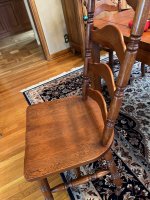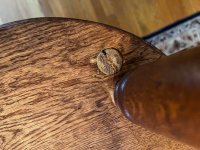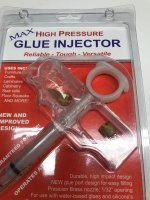My friend asked for help fixing loose backs on his dining chairs. I have not seen them in person, but he sent me photos.
The chairs are solid oak, backs are mounted to the seats with a wedged split tenon and have developed play over the years. I have a high pressure glue syringe that I've used on my own furniture with good results (drill small well placed hole and force Tite Bond into joint) I plan to use the glue syringe but am wondering if also gently tapping the wedge tighter or even adding a pin nail or two might be helpful. Concerned that tapping the wedge might have unintended consequences like splitting or forcing the chair back out of the seat.
Any input appreciated, photos attached below.
The chairs are solid oak, backs are mounted to the seats with a wedged split tenon and have developed play over the years. I have a high pressure glue syringe that I've used on my own furniture with good results (drill small well placed hole and force Tite Bond into joint) I plan to use the glue syringe but am wondering if also gently tapping the wedge tighter or even adding a pin nail or two might be helpful. Concerned that tapping the wedge might have unintended consequences like splitting or forcing the chair back out of the seat.
Any input appreciated, photos attached below.



